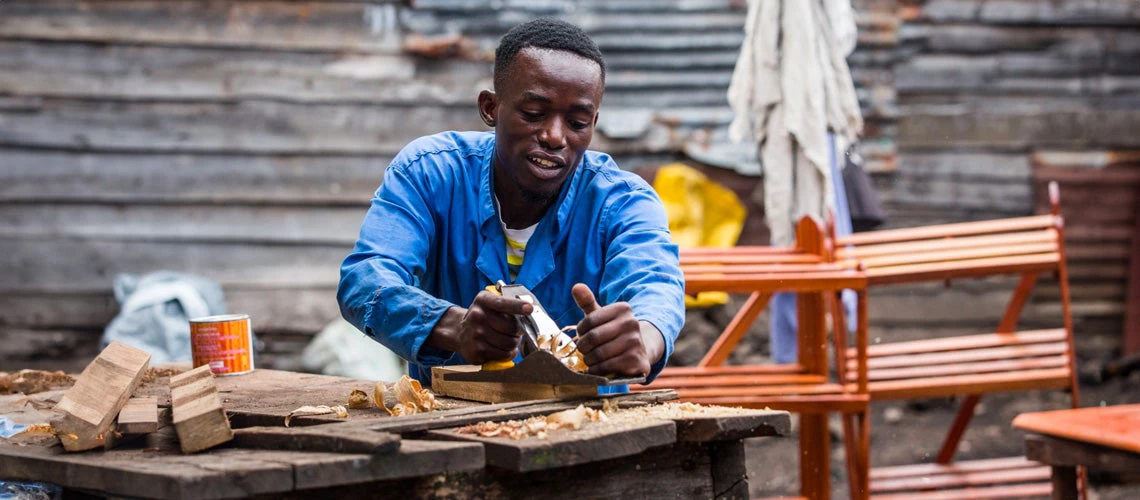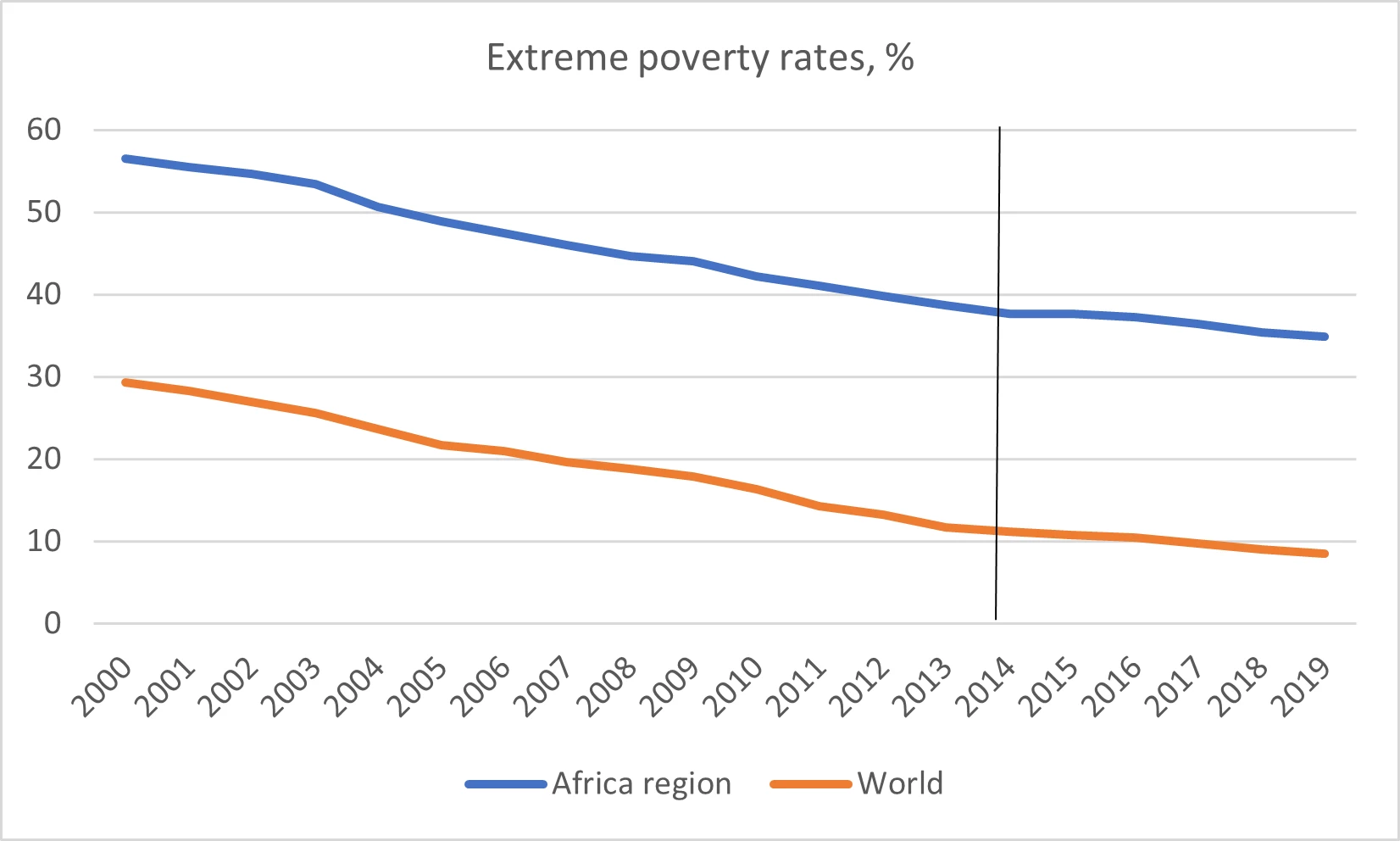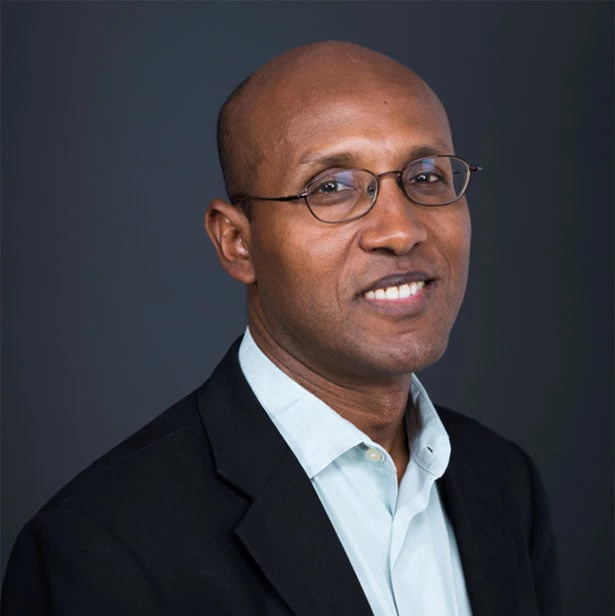 Carpenter building furniture in the Democratic Republic of Congo. Photo: Vincent Tremeau/ World Bank
Carpenter building furniture in the Democratic Republic of Congo. Photo: Vincent Tremeau/ World Bank
Let me begin with a number that is a good measure of a people’s progress: per capita income. Economic growth in Sub-Saharan Africa is forecast to slow this year to 2.5%, from 3.6% in 2022. Our population has increased about 2.5% at the same time, which means that in per capita terms progress stalled.
Indeed, per capita growth in Sub-Saharan Africa has not increased since 2015, putting us on the verge of a decade lost due to shocks, inflation, high debt, and weak global economy. We lay this all out in our current Africa’s Pulse: Delivering Growth to People through Better Jobs, our biannual publication analyzing short-term economic prospects for the continent.
Poverty reduction is off-track
With faltering growth has come faltering job creation, limiting a main channel out of poverty. In our forthcoming Africa Poverty and Inequality Report, produced with the World Bank Poverty Global Practice, we will provide a much-needed updated picture of poverty and inequality in the region, and delve into the reality the continent faces:
- The number of people in extreme poverty has increased in Africa from 370 million in 2014 to 391 million in 2019. Since then, it is projected to have increased further due to the economic impacts of COVID-19.
- Africa’s poor account for almost 60% of the world’s extremely poor, and 40% of Africa’s poor live in just four countries—The Democratic Republic of Congo, Madagascar, Nigeria and Tanzania.
- Inequality within countries in Africa is among the highest in developing regions. The Gini coefficient, a measure of inequality, is 41 in Sub-Saharan Africa, a level that is second only to Latin America and the Caribbean. High inequality limits poverty reduction in both low and middle-income countries.
- Incomes in Africa would have to be multiplied by 11, on average, to reach the global prosperity standard of $25 per person per day (in 2017 Purchasing Power Parity, PPP), compared to a factor of 5 for the world as a whole, underscoring the particularly steep challenge facing the region.
Extreme Poverty Rates
Charts from Africa Poverty and Inequality Report (forthcoming)
Why does growth in Africa translate into less poverty reduction than in other regions?
Both the current Africa’s Pulse Report and the upcoming poverty report make clear that a lack of inclusive growth and high inequality hamper poverty reduction in the region. The rate at which GDP growth translates to poverty reduction in Africa is the lowest of any region.
A lot of this inefficiency in translating growth to poverty reduction relates to the type of economies most prevalent in the region: too much reliance on a few raw products for international trade, too many micro firms, and unfavorable business practices on competition, finance, and infrastructure.
Given these constraints, it is unsurprising that 96% of employers are micro-firms with fewer than 5 employees. The small firm size reflects the challenges that entrepreneurs face to raise productivity, by adopting new technologies, to access larger markets, and ultimately to hire more workers. As a result, only one in six workers has a wage job in SSA, compared to one in two workers in high-income countries. By contrast, 80% of women and 67% of men in the region are engaged in this own-account or family work.
A strong ladder out of poverty requires good jobs on the continent—jobs with a stable wage, opportunity for skill-development and specialization, and access to appropriate tools and equipment—which only come through people working together in organizations that grow and thrive.
That’s why, on this #EndPoverty Day, I’d like to call for more focus on the Jobs Agenda as a pathway for hope and prosperity on the continent. Our latest Pulse Report lays out elements of such a pathway for governments to create an economy more conducive to jobs by focusing on fiscal stability, stronger institutions, human capital investments, and creating a more level playing field for firms.




Join the Conversation